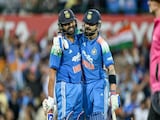Deep beneath a sprawling wildlife park in San Diego, California, a team of dedicated women is working to preserve the future. This isn't your typical basement lab; it's the world's oldest and largest Frozen Zoo, according to The Guardian.
Founded nearly 50 years ago, the Frozen Zoo houses over 11,000 samples representing more than 1,300 species. From giraffes and rhinos to armadillos and even extinct creatures, this frozen archive acts as a lifeline against the escalating biodiversity crisis.
Marlys Houck, the curator of the Frozen Zoo, leads a team of all-female scientists. Every day, they receive precious samples-bits of tissue collected from animals who have passed away naturally at the zoo. These seemingly ordinary pieces hold the key to future conservation efforts, according to the news outlet.
Through a meticulous process, the team cultivates cells from the collected tissue. These cells are then frozen and stored in liquid nitrogen, offering a chance to revive them in the future.
The pressure to succeed is immense. Every species lost represents another vial that won't make it into the Frozen Zoo. The team is in a race against time, striving to preserve irreplaceable genetic material before it disappears forever.
For Houck and her colleagues, their work is more than just a job; it's a sacred duty. They are the guardians of the future, ensuring that even amidst a climate crisis, some species might have a second chance.
The zoo was founded by a German American pathologist named Kurt Benirschke in 1972, who started a collection of animal skin samples in his lab at the University of California at San Diego and then moved it to the San Diego Zoo a few years later. At the time, there was no technology to use it beyond basic chromosome research, but Benirschke often quoted the American historian Daniel Boorstin: "You must collect things for reasons you don't yet understand."















